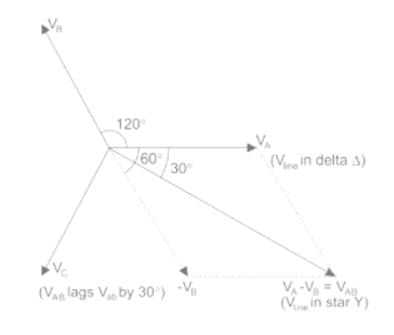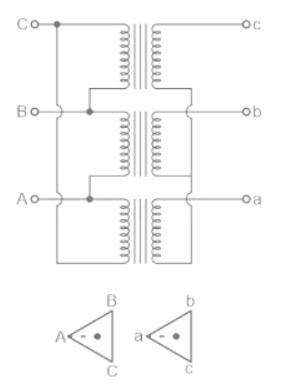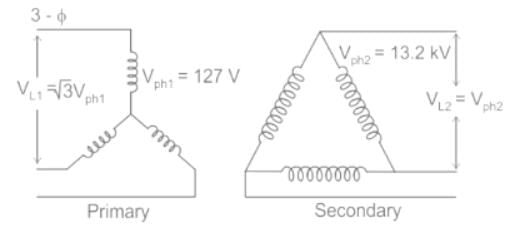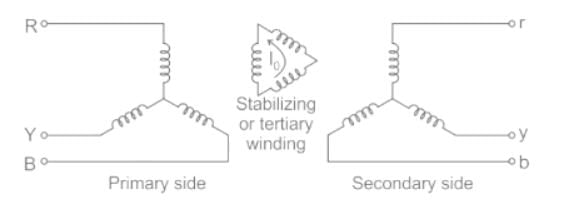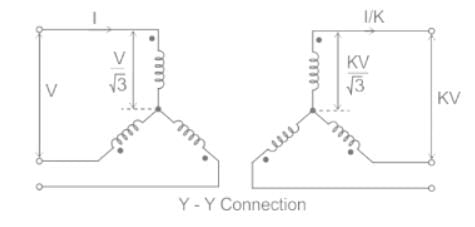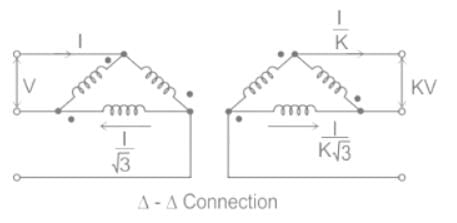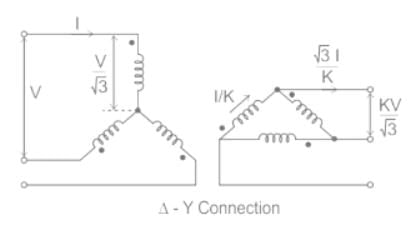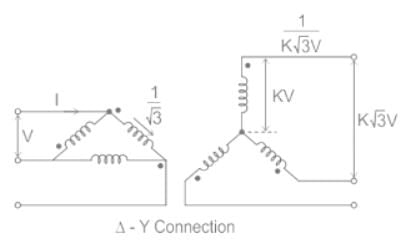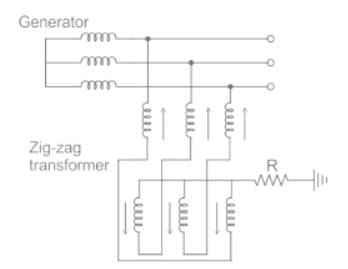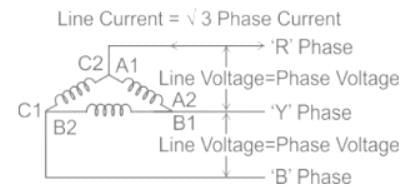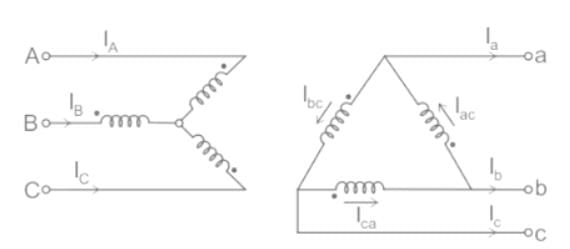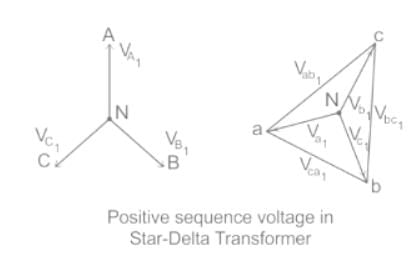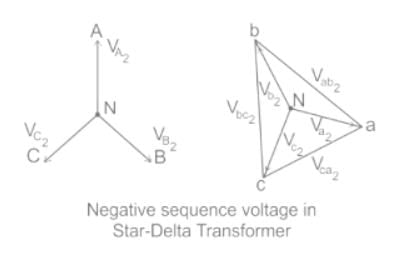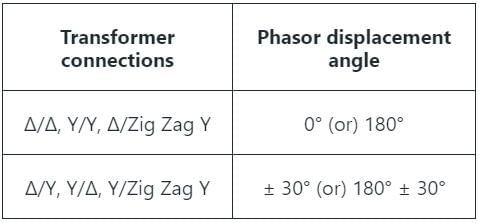Test: Three-Phase Transformer Connections - Electrical Engineering (EE) MCQ
10 Questions MCQ Test - Test: Three-Phase Transformer Connections
If the star side of the star-delta transformer shown in the figure is excited by a negative sequence voltage, then


Which of the following is the correct use of 'delta/delta' connections?
With reference to the delta-delta connection of a 3-phase transformer, state TRUE/FALSE for the following statements.
1. It is satisfactory for both balanced and unbalanced loading.
2. Third harmonic does not appear in the output voltage wave.
A three-phase transformer, connected in star-delta, is composed of three single-phase transformers, each rated 127 V / 13.2 kV. The line-to-line voltage ratio for the three-phase transformer is:
With the addition of tertiary winding, the Y-Y connection becomes ______connection.
Which among the following is a type of three phase transformer connection?
1. Star-Star connection
2. Open Delta connection
3. Scott connection
The secondary winding of Distribution transformer is always connected in
There is a phase difference of______ between the corresponding phases of primary and secondary______ in a star/delta transformer.
Delta / star transformer works satisfactorily when
Which of the following 3-phase connections of a transformer is rarely used?


